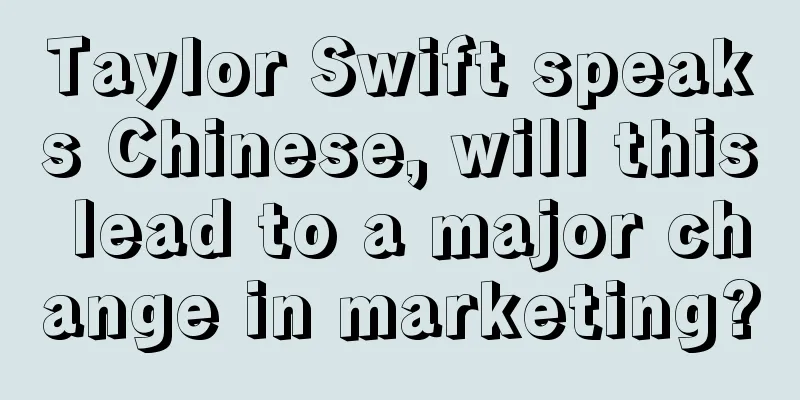In the AIGC era, how to strike a balance and measure?

After entering April, although the popularity of AIGC has cooled down somewhat compared to the previous period, in fact, the entire content industry still dares not neglect the possible upcoming revolutionary wave. At the 10th China Internet Audiovisual Conference held in the last two days of March, AIGC was still a topic that all video content platforms could not avoid. The leaders of iQiyi, Youku, Tencent Video and Mango TV expressed their optimism about this technology. Companies like iQiyi, which are good at relying on technology channels to develop content, are eager to put related technologies into the production chain. At the same time, for PUGC content such as short and medium videos, the productivity explosion brought about by AIGC is also seen as a potential benefit. On the one hand, professional content such as AI has once again stimulated the development of knowledge-based videos. Chen Rui, CEO of Bilibili, mentioned at the Audiovisual Conference that in the past year, the number of submissions of videos related to artificial intelligence on Bilibili increased by more than 86% year-on-year, and the cumulative number of views of ChatGPT-related videos exceeded 200 million. He believes that Bilibili should be the platform with the richest and highest quality AI-related content on the entire network. On the other hand, whether it is Bilibili, Douyin, or Kuaishou, they have all expressed on different occasions their realistic ideas that AIGC can further liberate the productivity of creators. Compared with the potential benefits that can be seen with the naked eye, the negative impact that AIGC may bring to Douyin, Kuaishou, and Bilibili in the short term may be more worthy of attention. In particular, since AI can quickly, efficiently and economically mass-produce short, flat and fast content that is good at stimulating users, how should the algorithm-based platform recommendation model be identified? What impact will a large number of original content creators suffer? And in order to cope with the exponential growth of AIGC content, how should the platform balance its bandwidth and censorship costs. Before AIGC tools became widely popular, these problems seemed somewhat groundless, but some B station UP masters were already worried. Compared with the reality that AI can only serve as an auxiliary when facing the higher threshold of film and television content creation, as AIGC tools become more and more "smart" and convenient, PUGC short-term video creators, who already have a low threshold, will inevitably face a huge impact and begin to rebound. At the same time, for the platform, the AIGC content that is about to flood the platform will not only increase bandwidth costs but also quickly dilute the platform traffic. Any attempt to use AIGC tools to "reduce costs and increase efficiency" will be counterproductive. How to strike a balance and grasp the scale is obviously a tightrope that platform managers must walk. 1. AI content factories are fierce disruptors of the original content ecosystemRecently, Bilibili has once again become a hot search topic on Weibo. Just on the first day of April, the news that some Bilibili UP hosts stopped updating attracted a lot of attention, and was even exaggerated to become a hot search topic of "Bilibili Suspension Trend". According to current statistics, there has not been a large-scale suspension of updates by creators, but the fact that several UPs with millions of fans have expressed their opinions has indeed made the outside world feel a little uneasy. Later, an insider of Bilibili explained in an interview with The Paper that the term "suspension trend" is not accurate, and that only some UPs have stopped updating for personal reasons, and it is not a collective behavior. On April 2, "Xu Da Wang, who relies on his face to make a living", one of the top 100 UP hosts in the gaming area with more than 3.8 million followers, also responded on Weibo: "Today's two trending searches are a bit weird, and I don't know who arranged them. The reason for my suspension is clearly stated in my video. It's all my personal reasons." Screenshot of Bilibili. Another UP host "-LKs-" who had previously announced a suspension of updates said on Weibo that his personal announcement of suspension had nothing to do with the economic situation, and his income at Bilibili this year was no less than before. Of course, in the first video of his suspension, "King Xu who makes a living by his face" actually talked about the impact of the decline in platform revenue on his creations. As of now, it is difficult to call it a "suspension wave" for a very small number of UP hosts to stop updating for personal reasons. However, Bilibili stated in its financial report that it spent 9 billion on creators' share last year but still encountered similar problems. This has indeed once again sounded the alarm for how the content ecology of the PUGC platform can operate healthily. In fact, another hot topic on Weibo these days regarding the UP host’s suspension of updates is #B station’s big UP host says AI creation is hitting originality#. One UP host said in an interview with 21st Century Business Herald that in addition to the decline in income, "the current AI creation capabilities are also a reason for the crackdown on original videos." The AI creation here obviously does not refer to the efficiency improvement brought by AIGC tools to creators. In fact, more and more professional and standardized AIGC content is eroding the already scarce original content traffic. Out of consideration for their own interests, the platforms are currently more interested in AIGC tools, hoping to use these tools to improve the content production efficiency of content creators as much as possible, thereby maximizing their commercial value. After all, in order to maintain user stickiness to the platform, the ability to output content stably and continuously remains the core. Especially for platforms like Douyin and Kuaishou that are now keen on relying on live streaming to monetize traffic, the continuous "realization" of AI digital people has actually begun to impact many real-life live broadcasts. After all, digital people can live broadcast 24 hours a day, 7 days a week, all year round, and there is no risk of interference from too many off-site factors. However, for PUGC platforms such as Bilibili that rely more on content creation bloggers to maintain content popularity and traffic, the current AIGC tools may be able to simplify their production processes to a certain extent, but it is still difficult to replace small-scale real-person team collaboration in many professional processes. However, for many short and fast content creations, today's AIGC tools have reached a stage where the threshold is low enough. Once an MCN company starts mass production, it will be able to create a large amount of fast-food content such as movie commentary in a short period of time. Make-A-Video can generate video images by inputting text The so-called "electronic pickled mustard tubers" that have emerged in large numbers in the past two years are exactly the type of content that AIGC tools are currently best at producing. They rely on a large amount of ready-made film and television or Internet video materials and can be put on the shelves in batches after high-density editing and AI dubbing. Although the popularization of AIGC technology is still in its early stages, as major AI companies are rapidly iterating their technology, the corresponding tools will only become more and more numerous and the threshold for use will become lower and lower (thousands of AIGC creation tools appeared in March alone) . What will naturally follow is the exponential growth of AIGC content, such as the overwhelming Midjourney pictures today. By that time, it is not an exaggeration to say that the entire platform will be flooded with the same old "electronic pickles". When the platform's content ecology is completely destroyed, even users who are interested in these contents will obviously start to find other ways to look for those scarce real-person creators again. 2. AI creates a "parallel universe", is the platform ready?People are often willing to project beautiful imaginations about the iteration of technology, but in reality, those who are most willing to try new technologies and put them into use are not all good people or in legitimate scenarios. After the recent rapid development of AIGC tools, there are many people who rely on these technologies to play tricks at the first time. Just a few days ago, pictures of former US President Trump being pinned to the ground by fully armed New York riot police circulated on various social media platforms, making people think that another earth-shattering event had occurred. However, these seemingly detailed pictures have nothing to do with the facts. In fact, these pictures were generated by AIGC. Relying on AIGC tools to create a parallel universe with "pictures and truth" has almost become the most fashionable thing recently. The Chinese national football team wins the championship, Trump retires, the Pope walks the runway, Yoda and Darth Vader walk the grassroots... As long as you dare not think of it, there is nothing AI dare not draw, and any picture you take out can be so realistic that it can be mistaken for the real thing. Of course, the ultimate goal of similar "content creation" is to create video content that is so realistic that it is hard to tell the difference between real and fake. For example, there is a special effects blogger with millions of followers on Douyin who used AI synthesis tools to "replace" the male actor Yang Yang in the kissing scene in the TV series of female artist Dilraba Dilmurat with his own short video. After being besieged by fans, the blogger righteously argued that he was just trying out the technology. In the end, the angry fans surrounded him offline and even had a physical conflict with him. It is certainly not advisable for fans of stars to turn their anger into violence, but it is obviously also illegal to infringe on the right of portrait under the guise of technical practice. The blogger has now removed the video and apologized, and similar situations are by no means isolated cases. In the dance area of Bilibili, there are still a large number of hot dance videos that use AI head-changing. Even though there were regulations that required AI face-changing content to be labeled, the platform mostly turned a blind eye. After all, for a long time, AI tools like Deepfake still have a high technical threshold to achieve high-precision content output, and large-scale abuse is not very cost-effective. However, the universality and “fool-proof” nature of AIGC tools have greatly lowered this threshold . Both large platform companies and small and medium-sized developers are actually constantly optimizing the accuracy and ease of use of related tools, and trying their best to create consumer-grade products like chatGPT that are ready to use out of the box. Under this premise, the emergence of a large number of free tools has actually enabled some people or companies to master the ability to generate a large number of PUGC video content by relying on AIGC. Especially now that AIGC tools have begun to have the ability to learn independently, the ability to imitate various types of high-traffic hits will only become stronger and stronger. The question is, as content platforms, are Douyin, Kuaishou and Bilibili ready to deal with large amounts of AIGC content? On the one hand, when you can make a few minutes of video just by typing on the keyboard, new content will undoubtedly show exponential growth. In fact, whether it is a long video or a short video, bandwidth cost is always a hard constraint that the platform cannot get rid of . According to Bilibili’s financial report in the second quarter of last year, its content traffic increased by 48%, corresponding to a 15% increase in server and bandwidth costs. The surge in content volume means that the corresponding costs will also increase, which is obviously inconsistent with the principle of "reducing costs and increasing efficiency" currently advocated by major platforms. On the other hand, it is a natural test of the platform's review capabilities . Although short video platforms such as Douyin have long begun to use AI tools to review content, the external factors of the regulatory environment still exist, and manual review teams are still indispensable for major domestic platforms. The sudden death of a reviewer at Bilibili last year also indirectly revealed the huge demand gap for manual review on PUGC content platforms, and the content "inflation" brought about by AIGC will undoubtedly only magnify this gap. AI Tool Review Process In the end, it still comes back to the same question: people need rest, but AI can work all year round. Not to mention, with traffic now reaching its peak, the internal competition among real-life creators has entered a white-hot stage. Once the platform does not impose a certain degree of hard constraints on AIGC creation and completely lets it go, the only thing that will be harmed in the end will obviously be the platform's content ecology itself and the loss of users. Therefore, compared to long video platforms such as iQiyi, Youku and Tencent Video, which are more interested in using AIGC tools to improve the production efficiency of film and television content, PUGC platforms need to worry more about the impact of AIGC on their platform content ecology, cost management and review mechanisms. When a new technology, especially a revolutionary new technology, emerges, decision makers of large companies tend to overestimate the impact of technology on their business, believing that new technology will create a whole new market and that the nature and structure of existing businesses will undergo a revolutionary evolution. However, this "technology obsession" often leads some companies into an adventure from which there is no return. Before a real protective fence against AIGC creation is established, Douyin, Kuaishou, and Bilibili had better not easily go all in on the chips they are betting on the future, as they might end up backlashing and "killing" themselves. Author: Great Entertainment Source: WeChat public account "Yiyu Observation" |
<<: Sharing of classic copywriting sentences, which can be applied
>>: What is a "sense of co-creation" brand? Be in awe of great thinkers and explorers (1)
Recommend
Content e-commerce: Douyin, Kuaishou, and Xiaohongshu "part ways"
As content platforms move into the e-commerce fiel...
As we enter the stage of deep cultivation of all channels, how can snack food brands achieve certain growth?
In the process of channel transformation, what cha...
The most searched product, which is flooding the Moments, is the "Sauce Flavor Latte" jointly launched by Luckin Coffee and Moutai.
Have you seen Moutai Latte on your WeChat Moments ...
It’s not easy for Meituan to become an outdoor media company | Outdoor Advertising Observation
The creation and operation of ladder media has alw...
How to set up the Amazon inventory pre-sale function? What are the methods?
Many people on Amazon will try to set up some func...
Can Shopee's delivery time only be set to 2 days? What should I pay attention to when shipping?
In order to ensure the quality of service for cons...
Can two Shopify stores be bound to one address? FAQ
Cross-border e-commerce is now the first choice fo...
Pushing incentive policies, holding meetings one after another, Tik Tok and WeChat aggressively attack mini-games
The competition in the mini-game market is becomin...
How do I cancel a digital credit card? What if I can’t cancel it?
With the rapid development of digital finance, dig...
Expert Marketing, Moving Towards the Era of Small V
Now more and more brands are looking for small blo...
What are the cross-border e-commerce operation and promotion strategies? How to promote well?
The cross-border e-commerce industry has been deve...
Latest announcement: WeChat Mini Store begins upgrading to WeChat Mini Store
In the wave of digitalization, the upgrade of WeCh...
Amazon Germany adds click-and-collect service
Recently, Amazon Germany launched a "click &a...
When will WishPB budget be increased? What is the rule for Wish price increase?
Wish PB (Product Boost) is a promotional tool on t...
What is the difference between Amazon KYC and second instance? Why are there two types?
Joining Amazon requires an audit. Some merchants m...









